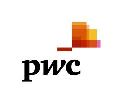Extreme Makeover Predicted for Healthcare (Really?) No Surprises for Healthcare Marketing among PwC Top Trends

PricewaterhouseCoopers Predicts
We predict that you’ll be reading a lot of New Year predictions this week.
One such crystal ball report from PricewaterhouseCoopers (PwC) uses pretty dramatic language. Within six top health industry issues, PwC expects an “extreme strategy makeover." And each of the six issues contain healthcare marketing, advertising and public relations implications for medical providers, private practices, physician groups, health systems, insurance companies and pharmaceutical companies. Virtually everyone.
The report from PwC cites six trends; all part of the ramp-up to full health reform implementation. But as 2014 draws another notch closer, health organizations are, predictably, working through new strategies in response to the new rules, new payment models, continuing cost pressures and new customer demands.
How these will impact your situation depends on where you are in the provider/payer/patient spectrum. But the industry changes ignited by legislative reform, says PwC, “are far from over. In fact, they’ve only just begun.” And it’s highly likely you’ve already adjusted your marketing plan.
If not, follow along. Here are the highlights as PwC sees the road ahead. They say:
Record spending on health information technology is likely to increase demand for skilled HIT professionals, an expanded role for chief information officers and increased merger and acquisition activity among organizations looking to share the cost and benefits of HIT integration.
Significant changes in benefit plan design, plan pricing and the health plan landscape can be expected as insurers adapt to new medical loss ratio. In spite of the ruling this month on the constitutionality of the individual mandate, states will have to continue moving forward on developing health insurance exchanges.
New risks and opportunities may emerge as payment models shift from fee-for-service to new models that focus on performance, health outcomes and shared cost savings in accountable care organizations.
Health organizations may feel the trickle down effect of decreased utilization by price sensitive consumers.
A further uptick in merger and acquisition activity is one way health organizations may share administrative burdens and IT investments, gain market share and fill strategic gaps.
Pharmaceutical companies see an opportunity to increase their visibility with consumers, influence health outcomes and reduce healthcare costs while increasing revenue using digital strategies and technology. The use of mobile health and wireless technologies by all health organizations is expected to continue to surge.
Some organizations will undergo an extreme makeover while others will stay the course or refine existing strategies. Whichever path they take, all health organizations will be under pressure to deliver greater value for less, and they will face new risks and realities as business models and market players emerge.
The full PwC report is recommended reading for anyone in healthcare marketing and advertising. Particularly since PwC found that consumers don’t fully understand or buy into all the [health care reform] changes. They observe: “…all health organizations will be under pressure to deliver greater value for less, and they will face new risks and realities as business models and market players emerge.”
Please let us know how these predictions resonate with you and your healthcare marketing approach. And if you want to discuss adjustments to your marketing plan, reach us through this page on our website.








